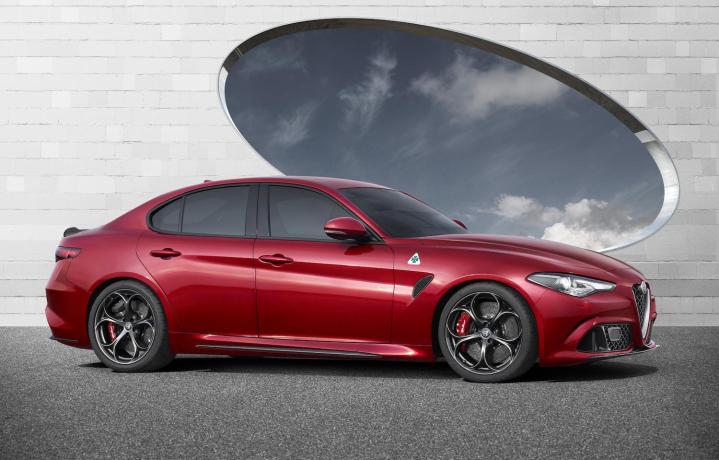
Right now, the only model Alfa Romeo sells in the U.S. is the 4C sports car, but FCA had originally planned to launch a full line of new models for the storied Italian brand. That will still happen, but plans are being scaled back and the launch of some of these models will be delayed.
The highly anticipated Giulia sedan will still launch here later this year, followed by a midsize crossover that could arrive before the year is out, or possibly in early 2017. Alfa will then conjure up a full-size sedan, two more crossovers, two “specialty” vehicles, and a hatchback. This product blitz was supposed to take place between 2014 and 2018, but given that Alfa still hasn’t launched the Giulia, that obviously isn’t happening.
In addition to pushing back the timetable, FCA is also making some changes to the lineup. The previously plan called for another sedan, which will be axed, and two compacts, which will be replaced by the single hatchback. De-emphasizing cars seems to be a theme of the revised FCA five-year plan, which also calls for the culling of the Dodge Dart and Chrysler 200. Last year, gas prices dropped while SUV sales boomed, and FCA apparently believes these trends will continue.
And while it’s still planning many new models for Alfa, FCA is also cutting its R&D, manufacturing, and product-development investments through 2018. The company says this is due to “uncertainties” in the Chinese market, where it presumably hoped to sell more Alfas. FCA also claims Alfa needs more time to develop a distribution network for the models already in the pipeline.
An Alfa comeback has been promised for years, so we’ll believe it when we see it. The brand’s future likely rests on the Giulia, which is designed to take the fight to the likes of BMW. With gorgeous styling and (in full-bore Quadrifoglio guise) a Ferrari-derived, twin-turbocharged V6, it certainly looks good on paper.
Editors' Recommendations
- Tesla’s electric Semi truck coming sooner than expected
- Google’s Pixel 6a could be coming far sooner than expected
- The new iPad Pro’s OLED screen could come later than expected
- Smartwatches don’t come flashier than the new Michael Kors Access Gen 5E Darci
- Apple confirms that the new 2020 iPhones will launch later than normal


